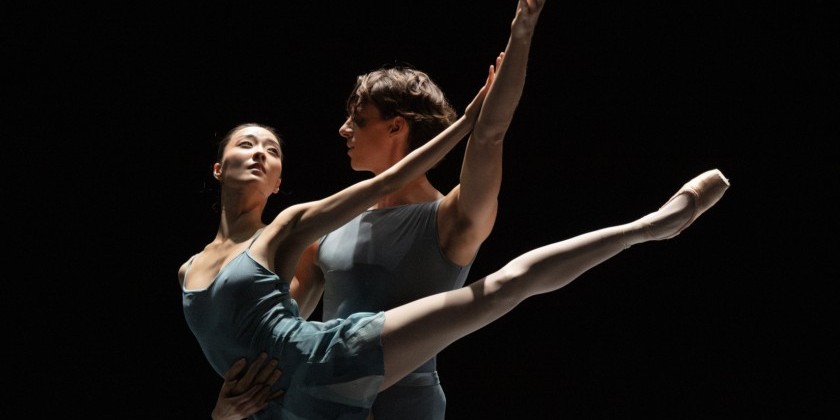IMPRESSIONS: Gisèle Vienne’s "This Is How You Will Disappear" at Théâtre National de la Colline, Paris

In partnership with Chaillot Théâtre National de la Danse
La Colline, Théâtre National, Paris
January 6-15, 2022
Gisèle Vienne’s work This is How You Will Disappear is a strange and disturbing piece of theatre that takes place in a breathtakingly realistic forest landscape designed by Vienne. Set amidst an abundance of shifting fog ‘sculpted’ by Fujiko Nakaya, it was created for the Festival d’Avignon in 2010 in collaboration with its cast of three, whom the abundant program notes identify as Authority (Jonathan Capdevielle), Beauty (Nuria Guiu Sagarra) and Ruin (Jonathan Schatz).
This work alludes to social ideas of beauty and the violence we inflict upon ourselves and one another to achieve them.

The visuals are spectacular and the fog is mesmerizing as it gushes down from above like a giant wave, overflowing the stage and roiling up the hill of auditorium seats to wrap cold tendrils gently around our shoulders. Nakaya’s sculpting of the fog within this stunning landscape is, in and of itself, worth experiencing. Time is suspended as this visible, felt moisture wafts, swirls and sifts through space like paint pouring through a three-dimensional canvas.
In contrast to this organic landscape and the fog’s fluid and sensual movement through it, the performers’ movements are functional, clipped, even. Minimalist and pedestrian. We see Beauty, represented as a gymnast, emerge from a nest on the forest floor like a fresh young chick. We witness the relentless push to perfect, with repeated exercise routines and specific movements performed under command of a trainer who represents Authority. This includes sit-ups, with the trainer’s head pausing between the gymnast’s thighs as he secures her feet, and handstands with his head directly above her crotch as she splits her legs wide apart in second position.

The allusion to sexual abuse is evident and intentional, as is the underlying violence, made explicit in the trainer’s spoken text, “Be perfect today, or I kill you and throw your body in the river.” I cannot help but feel disgust as the trainer bows his head down to the floor before her as she assumes that typical ‘gymnast pose’ -- overarched spine, one knee bent, arms extended on the high diagonals with chest protruding. Beauty and perfection are clearly on an imaginary pedestal, but this is also the warped apology of an abuser after harming their victim.
Long periods of stillness or minimalist movement fill this work. These tableau are static, without the inner life or subtle textural shifting that create a sense of conviction, vitality or presence, like we might find in Butoh dance. It is unclear if this is intentional or not. As expansive as my definition of dance can be, I found myself flummoxed as to why I experienced this work as ‘theatre’ and not ’dance.’ The performers execute the choreography, certainly, but without refined bodily awareness or coherence. The movements come about more in parts and pieces, as if mind and body have not reached an accord. Again, I cannot tell if this is Vienne’s intention, or not.

This is a depressing piece that depicts the hideousness of our warped yearnings, and how a quality, like beauty or authority or charisma, becomes its darkest shadow. Topics of abuse, violence, or perversion need to be aired, certainly. Over the years I have seen a number of pieces here in Paris that do this. It is challenging, however, to present this kind of material in ways that expand beyond the repulsion they invoke, which tends to shut us down or feed a downward spiral into despair or self-hate. This Is How You Will Disappear does a better job than many in this genre, which we might call Explosé, but I cannot help but wonder to what degree this type of work triggers trauma in those who have been victim to these types of violence.
As much as I appreciate this Franco-Austrian artist’s extraordinary scenography and her engagement in “the battle against social violence,” I am not persuaded that replicating our worst aspects, even as archetypes in silhouette, is sufficient to meet the desperate needs of our times. Kept hidden, these types of violence only flourish, but how can we bring forth challenging, even repugnant realities in ways that bring new insight, inspire change, or offer new possibilities? I really wish this genre would evolve into something more constructive.












